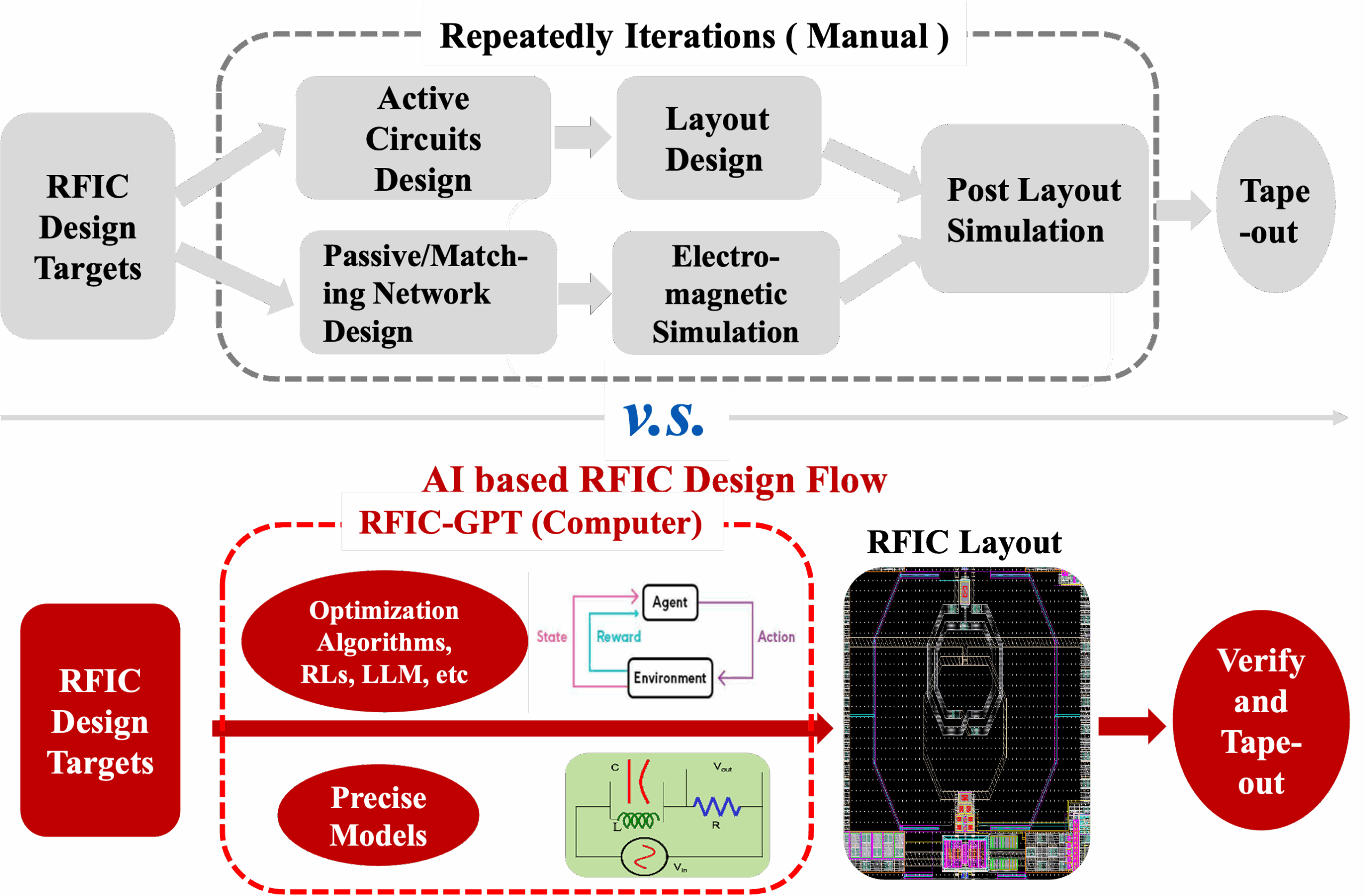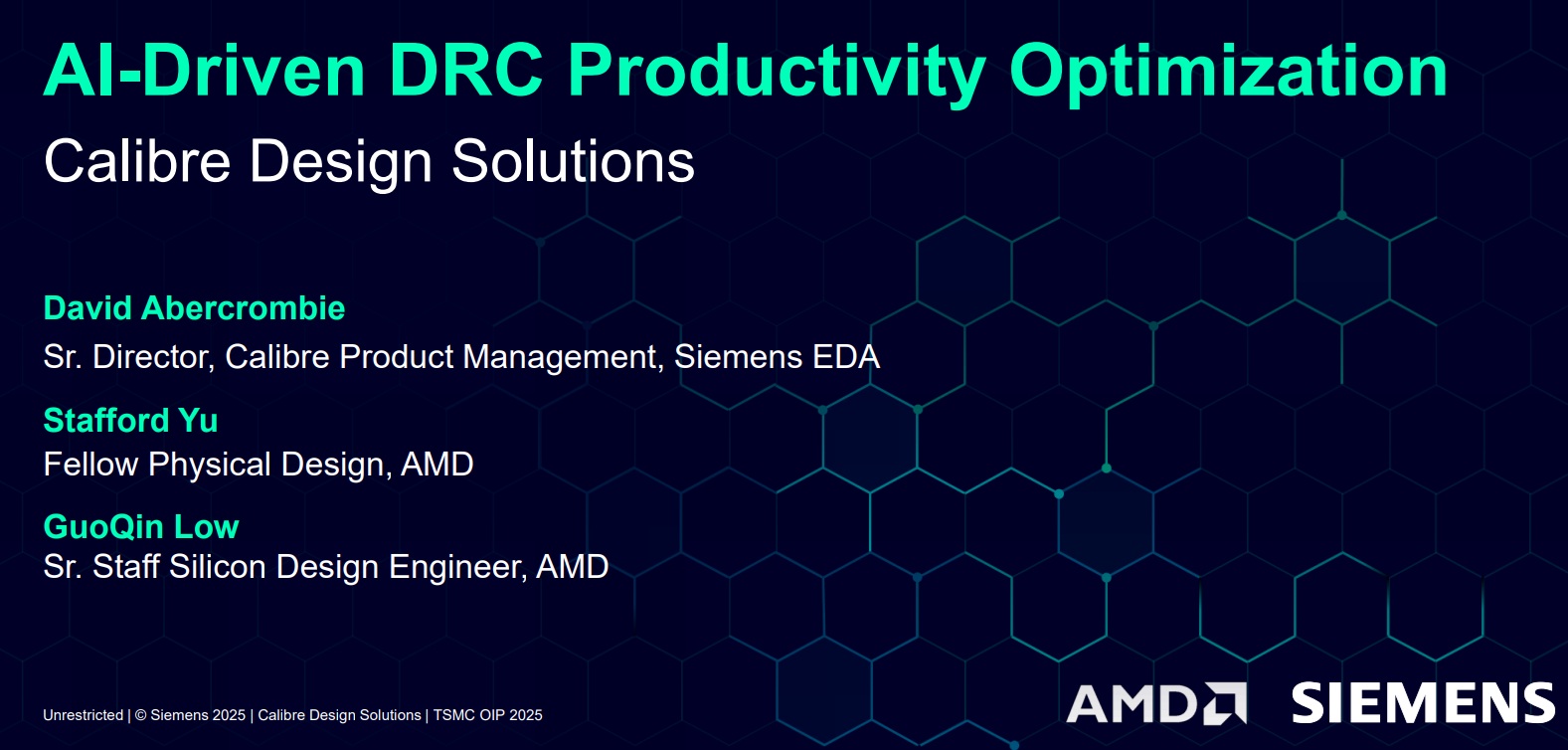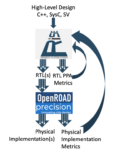Building a complex SoC is a risky endeavor that demands careful planning, strategic decisions, and collaboration across hardware and software domains. As highlighted in Darren Jones’ RISC-V Summit presentation from Andes Technology, titled “From Blueprint to Reality: Navigating SoC Tradeoffs, IP, and Ecosystem,”… Read More
 Radio Frequency Integrated Circuits (RFICs) Generated by AI Based Design AutomationBy Jason Liu, RFIC-GPT Inc. Radio frequency integrated…Read More
Radio Frequency Integrated Circuits (RFICs) Generated by AI Based Design AutomationBy Jason Liu, RFIC-GPT Inc. Radio frequency integrated…Read More Ceva-XC21 Crowned "Best IP/Processor of the Year"In a resounding affirmation of innovation in semiconductor…Read More
Ceva-XC21 Crowned "Best IP/Processor of the Year"In a resounding affirmation of innovation in semiconductor…Read More AI-Driven DRC Productivity Optimization: Insights from Siemens EDA's 2025 TSMC OIP Presentation In the rapidly evolving semiconductor industry, Design…Read More
AI-Driven DRC Productivity Optimization: Insights from Siemens EDA's 2025 TSMC OIP Presentation In the rapidly evolving semiconductor industry, Design…Read MoreReimagining Architectural Exploration in the Age of AI
This is not about architecting a full SoC from scratch. You already have a competitive platform, now you want to add some kind of accelerator, maybe video, audio, ML, and need to explore architectural options for how accelerator and software should be partitioned, and to optimize PPA. Now we have AI to help us optimize you’d like … Read More
S2C, MachineWare, and Andes Introduce RISC-V Co-Emulation Solution to Accelerate Chip Development
MachineWare, and Andes Technology today announced a collaborative co-emulation solution designed to address the increasing complexity of RISC-V-based chip design. The solution integrates MachineWare’s SIM-V virtual platform, S2C’s Genesis Architect and Prodigy FPGA Prototyping Systems, and Andes’ high-performance… Read More
Aerial 5G Connectivity: Feasibility for IoT and eMBB via UAVs
In the evolving landscape of telecommunications, uncrewed aerial vehicles (UAVs) are emerging as innovative platforms for extending 5G networks, particularly in areas lacking terrestrial infrastructure. Dr. Jyrki T. J. Penttinen’s paper, presented at the First International Conference on AI-enabled Unmanned … Read More
A Webinar About Electrical Verification – The Invisible Bottleneck in IC Design
Electrical rule checking (ERC) is a standard part of any design flow. There is a hidden problem with the traditional approach, however. As designs grow in complexity, whether full-custom analog, mixed-signal, or advanced-node digital, the limitations of traditional ERC tools are becoming more problematic. This can lead to… Read More
Signal Integrity Verification Using SPICE and IBIS-AMI
High-speed signals enable electronic systems by using memory interfaces, SerDes channels, data center backplanes and connectivity in automobiles. Challenges arise from signal distortions like inter-symbol interference, channel loss and dispersion effects. Multi-gigabit data transfer rates in High-Bandwidth Memory… Read More
WEBINAR: Why Network-on-Chip (NoC) Has Become the Cornerstone of AI-Optimized SoCs
By Andy Nightingale, VP of Product Management and Marketing
As AI adoption accelerates across markets, including automotive ADAS, large-scale compute, multimedia, and edge intelligence, the foundations of system-on-chip (SoC) designs are being pushed harder than ever. Modern AI engines generate tightly coordinated, … Read More
Quantum Computing Algorithms and Applications
In an upcoming Innovation blog we’ll get into how quantum computers are programmed. Here I’d like to look more closely at algorithms beyond Grover and Shor, and what practical applications there might be for quantum computing. I also take a quick look at what analysts are saying about potential market size. Even more than in AI, … Read More
imec on the Benefits of ASICs and How to Seize Them
In an era where product differentiation increasingly depends on performance, power efficiency, and form factor, Application-Specific Integrated Circuits (ASICs) have become the ultimate competitive weapon for innovative companies. Unlike off-the-shelf processors, FPGAs, or even ASSPs, a full- or semi-custom ASIC is… Read More
CEO Interview with Eelko Brinkhoff of PhotonDelta
In 25 years of working in economic development, Eric gained a lot of experience and knowledge in the field of Foreign Direct Investments (FDI), internationalisation of SME’s, innovation cooperation and economic development. I have built a strong network in the Netherlands and abroad towards business, government, knowledge… Read More













The Quantum Threat: Why Industrial Control Systems Must Be Ready and How PQShield Is Leading the Defense